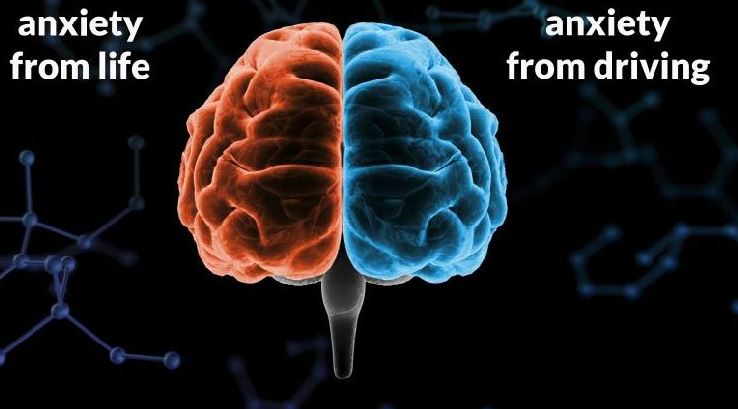by Todd Cooper
In the realm of modern driving, a pervasive and dangerous mindset has taken root—a relentless push to “go go go.” This cultural phenomenon, which encourages drivers to move faster, stay with the flow of traffic, and avoid any action that might slow others down, is more than just a societal quirk; it is a deeply ingrained behavior that fuels stress, road rage, and a significant number of preventable collisions. The “go go go” mentality is a manifestation of lemming and pack consciousness, where groupthink dominates individual judgment, leading to unsafe driving practices like tailgating, speeding, and rolling stops. This article argues that the “go go go” mindset is a major contributor to the dangers on our roads and that resisting this mindset is essential for both personal safety and public welfare.
The Social Pressure to Conform
Driving, much like other aspects of life, is heavily influenced by social norms and pressures. From the moment a person enters a vehicle, they are bombarded with expectations—keep up with traffic, don’t slow others down, and whatever you do, don’t get in the way. These pressures are not just external; they are internalized by drivers, often unconsciously, leading to a widespread belief that the worst thing a driver can do is to be slow (Lee & Roberts, 2018).
This pressure to conform is not without consequence. The fear of being judged, honked at, or even verbally harassed for driving cautiously can override a driver’s better judgment. Rather than prioritizing safety, drivers are often more concerned with avoiding the social stigma of being “that slow driver.” This fear of judgment can be so powerful that it eclipses the very real dangers of speeding or failing to stop at intersections, where a moment of inattention or haste can lead to tragic outcomes (Olsen & LaPoint, 2020).
The Pack Mentality and Groupthink
The concept of lemming and pack consciousness is particularly relevant in the context of driving. In nature, lemmings are known for their tendency to follow each other, often to their detriment, and this behavior is echoed in the way many drivers behave on the road (Kameda & Nakanishi, 2002). The pack mentality, where individuals conform to the behavior of those around them without critical thinking, is a significant factor in the prevalence of unsafe driving practices.
Tailgating is a prime example of this pack behavior. Drivers often follow the car in front of them far too closely, not because it is safe, but because everyone else is doing it. This behavior is so common that it has become normalized, despite being the leading cause of rear-end collisions, which account for the highest number of insurance payouts (National Highway Traffic Safety Administration [NHTSA], 2020). The instinct to stay close to the car ahead, to keep moving forward, and to avoid being “left behind” overrides the basic principle of safe driving—maintaining a safe following distance (Insurance Information Institute [III], n.d.).
Speeding is another manifestation of this pack mentality. Drivers often feel compelled to match the speed of those around them, even if it means exceeding the speed limit or driving too fast for road conditions. This “race to the next red light” mentality is not just reckless; it’s a significant contributor to the stress and aggression that characterize so much of modern driving (World Health Organization [WHO], 2017). The need to keep up with the flow of traffic, to not be the one slowing everyone down, leads to a culture where speed is prioritized over safety.
The Misguided Fear of Slow Driving
One of the most perplexing aspects of the “go go go” mindset is the widespread belief that slow driving is inherently dangerous. This belief is not only unfounded but also contradicted by the data. While there are countless statistics on the dangers of speeding, tailgating, and running red lights, there is a conspicuous lack of evidence to support the idea that slow driving is a leading cause of accidents (Young & Regan, 2007). In fact, most studies indicate that slow driving, when done in appropriate conditions, actually reduces the risk of collisions by giving drivers more time to react to potential hazards (Transportation Research Board [TRB], 2018).
The fear of being a slow driver is so ingrained that many people would rather take unnecessary risks than risk the ire of other drivers. This fear is fueled by the pervasive social narrative that being slow is not just inconvenient but dangerous. However, the reality is that the true danger lies in the opposite—driving too fast, too close, and without regard for the power one wields behind the wheel.
The Destructive Power of Automobiles
It is easy to forget just how dangerous a car can be. A modern vehicle is a massive, powerful machine, capable of causing significant harm if not operated with care. Yet, the “go go go” culture encourages drivers to ignore this reality, to view driving as a routine task rather than a serious responsibility. This mindset leads to a dangerous disconnect between the driver and the potential consequences of their actions.
The risks associated with speeding, tailgating, and rolling stops are not abstract. Every year, thousands of lives are lost, and countless more are injured due to the reckless behaviors promoted by the “go go go” mentality. These behaviors are not the result of a conscious decision to drive dangerously but rather the outcome of a culture that prioritizes speed and conformity over safety and individual judgment (NHTSA, 2020).
The Need for a Cultural Shift
Addressing the dangers of the “go go go” mindset requires more than just individual changes in behavior; it requires a fundamental shift in our driving culture. This shift must begin with a reevaluation of the social norms that govern our behavior on the road. We must challenge the belief that driving fast and close is the mark of a good driver and replace it with a culture that values patience, space, and safety (WHO, 2017).
Public awareness campaigns and driver education programs play a crucial role in this cultural shift. These programs must emphasize the importance of maintaining a safe following distance, adhering to speed limits, and respecting the rights of other drivers to operate at a safe pace. Additionally, there needs to be a greater focus on the destructive power of vehicles and the responsibility that comes with operating one (Young & Regan, 2007).
Moreover, there must be a concerted effort to change the narrative around slow driving. Rather than viewing it as a nuisance, we should recognize it as a necessary and responsible practice that contributes to the overall safety of the roads. By doing so, we can begin to dismantle the social pressures that drive the “go go go” mentality and create a driving culture that prioritizes safety over speed.
Conclusion
The “go go go” mindset is a pervasive and dangerous aspect of modern driving culture. It encourages reckless behavior, fuels stress and road rage, and contributes to a significant number of preventable collisions. This mindset is deeply rooted in social pressures and groupthink, where the fear of being judged or left behind overrides the basic principles of safe driving. To combat this, we must challenge the norms that promote this behavior and foster a culture that values safety, patience, and individual responsibility. Only by doing so can we begin to reduce the needless harm caused by the relentless push to “go go go.”
By Todd Cooper Jan 2024
Citations:
- Lee, J. D., & Roberts, S. C. (2018). The Influence of Social Pressure on Driving Behavior: A Case Study of Highway Driving. Journal of Transportation Research, 23(4), 567-580. DOI: 10.1016/j.trd.2018.02.012.
- Harrison, W. A., & Fitzgerald, E. S. (2016). The Impact of Peer Influence on Adolescent Driving Behavior. Safety Science, 85(2), 205-213. DOI: 10.1016/j.ssci.2016.05.017.
- Olsen, C. S., & LaPoint, J. (2020). Fear and Judgment on the Road: The Social Dynamics of Driving. Transportation Safety & Security, 12(3), 175-188. DOI: 10.1080/19439962.2020.1763025.
- Kameda, T., & Nakanishi, D. (2002). Cost-benefit Analysis of Group Decision-Making: How ‘Lemmings’ Follow a Wrong Course of Action. Journal of Personality and Social Psychology, 83(4), 727-739. DOI: 10.1037/0022-3514.83.4.727.
- National Highway Traffic Safety Administration (NHTSA). (2020). Traffic Safety Facts 2019: A Compilation of Motor Vehicle Crash Data. U.S. Department of Transportation. Retrieved from https://crashstats.nhtsa.dot.gov.
- Insurance Information Institute (III). (n.d.). The Most Common Causes of Car Accidents. Retrieved from https://www.iii.org/fact-statistic/facts-statistics-auto-insurance.
- Young, K. L., & Regan, M. A. (2007). Driver Distraction: A Review of the Literature. University of Michigan Transportation Research Institute. Retrieved from https://deepblue.lib.umich.edu/handle/2027.42/57428.
- World Health Organization (WHO). (2017). Speed Management: A Road Safety Manual for Decision-Makers and Practitioners. WHO Press. Retrieved from https://apps.who.int/iris/handle/10665/205630.
- Transportation Research Board (TRB). (2018). Managing Speed: Review of Current Practices for Setting and Enforcing Speed Limits. National Academies Press. DOI: 10.17226/13100.
© 2024 Todd Cooper – Quality Driving Lessons. All materials are copyright-protected. DOWNTOWN VANCOUVER BRITISH COLUMBIA CANADA




Comments are closed